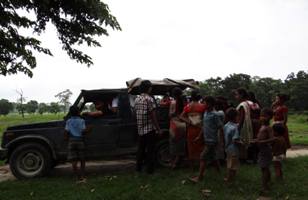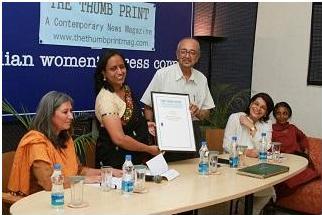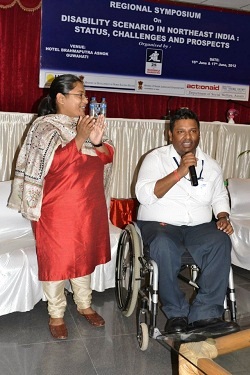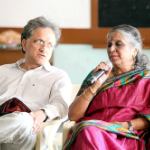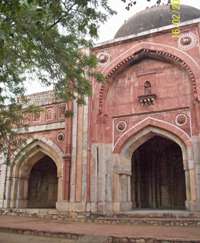Bamungaon and Sarogaon are villages situated 10 kms away from Bokakhat main town, Golaghat District of Assam close to the Kaziranga National Park. People from the indigenous Mishing Community live here. These people are deprived of their land and livelihood opportunities, live in extremely vulnerable situations working as daily wage labourers. Attached to their ancestral land and understanding the significant role nature plays, these people have taken up the responsibility of protecting the wildlife at the Kaziranga National Park. Every night these folks go out patrolling and try to keep their area safe from illegal poachers and hunters. They have created a structure of community fencing with the help of film-maker and conservationist Goutom Saikia. While most of us are busy signing online petitions to save rhinos, going for protest rallies, lighting candles and mourning and condemning these inhuman acts, these villagers have created milestones to actually stop poaching.
The zeal to stop poaching and save the environment has been through very unfavorable conditions. The road leading to these villages is in very poor condition; added to that are the social conditions which lack adequate medical and educational facilities. The one primary school in the village remains closed most time of the year, leaving the villagers with no other option but to discontinue their children’s education.
After having known about all these problems, four of us decided to reach out to these people and help them as much as we can at our individual levels. On July 5,2013 we set out on our small mission by carrying necessary items like clothes, toothpastes, toothbrushes, soap, shoes etc for them. Everything went on successfully till the July 7 afternoon when we were about to return. There is only one vehicle in the village which belongs to Goutom Saikia, which would take us to our bus. While we were about to leave, a call came to Saikia from a man seeking help to carry his pregnant wife to the First Referral Unit in Bokakhat Town. Curious why the renowned 108 service hasn’t responded to these people’s woes, I called the State District Project Manager (DPM) enquiring why no ambulance was sent. To this the officer in charge replied that the road doesn’t permit ambulances to go. The vehicle the entire village counts on, is the gypsy which Saikia drives. Without further delay we took her with us in the gypsy along with another pregnant lady and her. We were 11 people on this 2 hour ride heading towards Bokakhat. Due to the terrible road conditions and inadequate response from health authorities, the lady who was in extreme labor pain delivered the baby in the car. The baby started crowning and couldn’t come out completely and the mother started bleeding profusely. We helped her while Saikia drove to the nearest FRU.
After reaching the FRU, the attitude of the hospital staff and management was shocking. Nobody came forward to take the patient inside and it was only after much shouting and scolding they brought the stretcher to take the mother and her half delivered baby inside. Sadly by this time the baby had already dried up and was running short of oxygen and the condition of the mother was worse. She had to be taken to Golaghat and the hospital ambulance demanded a sum of Rs 2000/- initially from the patient’s attendant (although it is supposed to be free service). This resulted in another round of phone call to the DPM and finally after unnecessary arguments and delays the driver took her to Golaghat under medical supervision.
It is noteworthy that this FRU has got two MMU’s (Mobile Medical Unit), an Adoroni Scheme vehicle which is supposed to carry the mother and the child home after delivery. The condition of the vehicle was terrible. The ASHA supervisor and the DPM told us that the ambulance is almost obsolete and they have sent repeated requests to the state to allot another ambulance to them but with no results. Usually the ambulance charges up to Rs 2000 for pick up and dropping patients from the hospital to their home. The number of schemes in Assam for maternal healthcare is innumerable. However, how much of these services can people avail? Are the poor benefitting at all from these? Who looks after the implementation of these services?
In one day I witnessed the joy of a mother lighting up to the first cries of her baby. In the very same day she lost that light and lies struggling for her life. The irony in this situation is that NRHM Assam won several awards for its meritorious achievement and the news was published on the same day we lost the little soul.
Find us on facebook: facebook.com/TheThumbPrintMag
